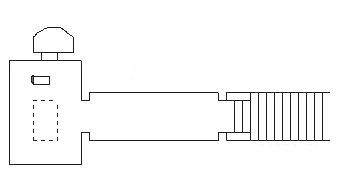![]()
Valley of the Kings - KV55
'Amarna Cache' - XVIII Dynasty
|
Tomb
dated to Akhenaten’s time and known now
as Amarna cache was discovered in January 1907 by Edward R. Ayrton and
Theodore M. Davies. Remainders of gilded wooden chapel belonging to
queen
Tiji,
the wife of Amenhotep III, were found
inside and thus the tomb used to be assigned to her.
A
coffin, originally made for Semenkhkare's consort - Merytaten,
beautifully manufactured and incrusted with gold and precious stones,
included a mummy. Forehead of the anthropoid coffin was adorned with
gold ureus – symbol of royalty. The name of king was removed in
ancient time, probably when it moved from Akhetaten to Valley of the
Kings. In the tomb were found also four canopic
jars with carved female heads on their covers, various small artifacts
mainly with names of Amenhotep III and Tiy and finally last but not
least - fragments of gilded chest-like chapel belonging to Tiy and
resembling those discovered in
Tutankhamun’s
tomb. Unfortunately all its elements underwent complete destruction. The
coffin and mummy inside of it were severely decayed due to ground water
getting to the tomb. First unfolding of the mummy (Joseph L. Smith)
caused its bad damage and turned part of it into ash. Only
bones
and skull remained in good
condition. |
|
|

|

|
![]()
|
Copyright © 2000-2013 Dariusz Sitek, Czestochowa - Chicago - Ann Arbor |